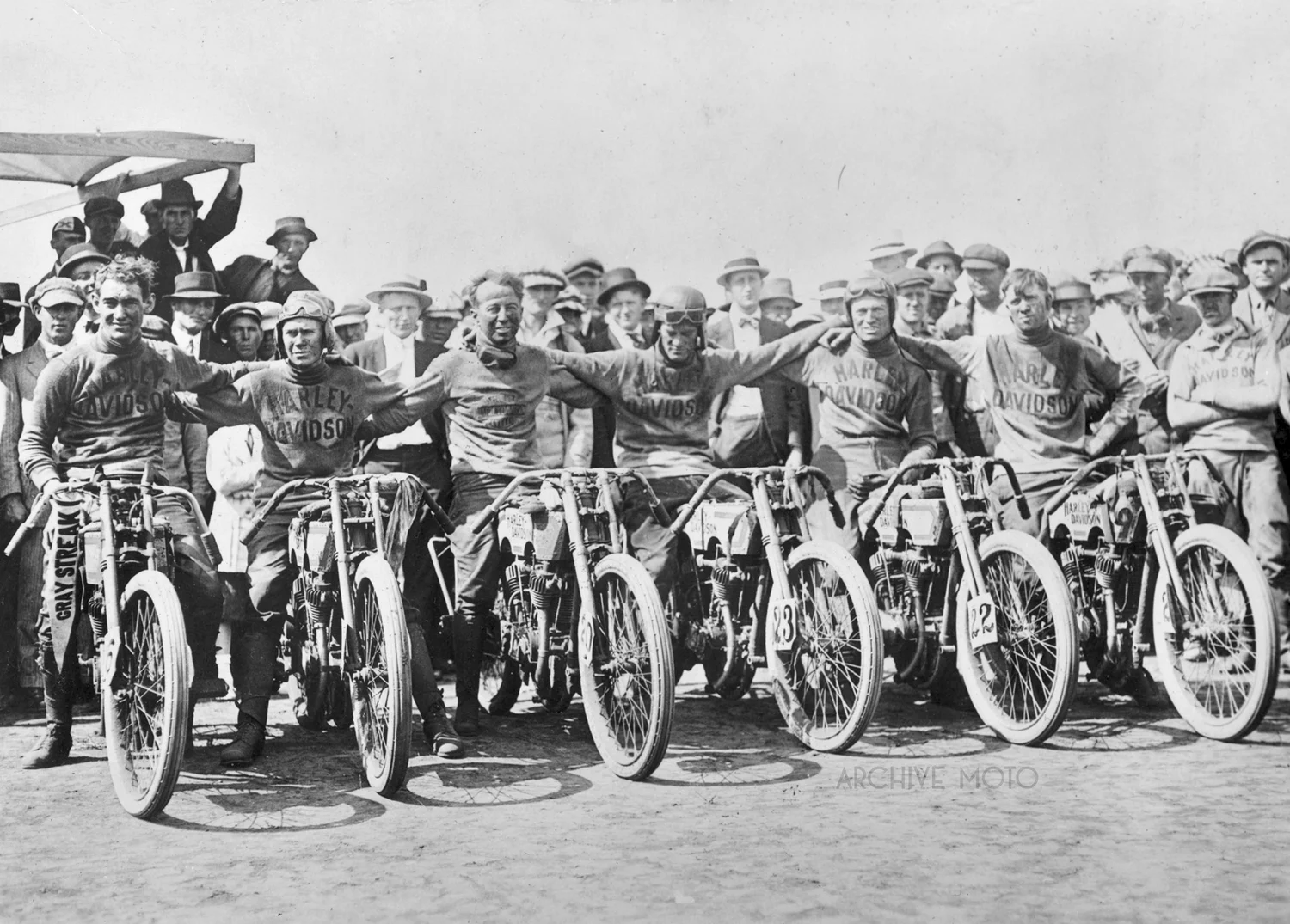The early years of the roaring twenties represent the first high water mark in professional motorcycle racing. It was a period when sophisticated machines were let loose by men of true and unrelenting grit. In the previous decade, motorcycle racing had bloomed into several forums, and the spectacle enthralled the country. By the early 1920s, racers had kicked-up tails of dirt and dust on flat tracks, kept the enthusiasts breathless on the edge of the motordrome bleacher, and stretched the capabilities of iron and rubber on the colossal board track speedways to their limits. Still, by the latter half of the decade, the sport, as well as the industry, was in significant decline, and the high waters of the golden age of motorcycle racing began receding.
In the years preceding WWI, motorcycle racing in the United States had grown from low-speed grudge matches on local horse tracks to unrestrained, factory-supported speed blitzes on motordromes, flat tracks, and superspeedways. With Harley-Davidson entering the sport in 1914, the two central competing brands, Indian and Excelsior, found themselves in a three-way battle against a well-funded and laser-focused adversary. Local dirt flat tracks continued to rise in popularity, and the Dodge City 300 became the sport's premier race. Still, as the gates of America's infamous board track saucers, the fabled motordromes closed, a new breed of track soon emerged.
The white-hot excitement of the American motordrome came hand-in-hand with near-weekly accidents, and with an ever-rising death toll, wooden saucer racing would not last much longer. In just four seasons, close to 30 young motordrome racers had lost their lives along with another dozen spectators. Public outcry and a growing distaste within the industry marked the beginning of the end for the fabled wooden bowls almost as soon as they arrived. Then, in September 1914, the last board of the short, circular wooden motordromes was nailed in place in Omaha, Nebraska.
The first decade of the American motorcycle was nothing short of sensational. Hundreds of manufacturers rolled thousands of machines out of their factories, each more capable than the one before. In a time when automobiles were still prohibitively expensive, motorcycles offered people of every status an urbane and practical mode of transportation. Local motorcycle clubs sprung up across the country, as did numerous trade publications describing the vast spectrum of motorcycling life. As an exhilarating offshoot of the wildly popular bicycle racing circuit, racing motorcycles had become one of the most popular sports in the country. Once competition reached a national level, the first racing stars emerged simultaneously with the first factory teams.





